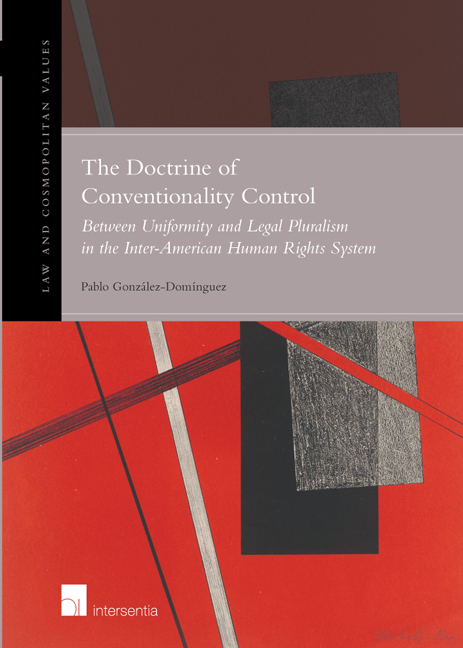 The Doctrine of Conventionality Control
The Doctrine of Conventionality Control Book contents
- Frontmatter
- Foreword
- Acknowledgments
- Contents
- List of Cases and Opinions
- List of Treaties, Instruments and Documents
- General Introduction
- Chapter 1 Jurisprudential Development of the Doctrine of Conventionality Control
- Chapter 2 Legal Analysis of the Doctrine of Conventionality Control
- Chapter 3 Questioning the Legal Validity of the Doctrine of Conventionality Control
- Chapter 4 Reconstructing the Doctrine of Conventionality Control in Light of the Principle of Subsidiarity
- General Conclusions
- Bibliography
- Index
- Miscellaneous Endmatter
General Conclusions
Published online by Cambridge University Press: 11 October 2018
- Frontmatter
- Foreword
- Acknowledgments
- Contents
- List of Cases and Opinions
- List of Treaties, Instruments and Documents
- General Introduction
- Chapter 1 Jurisprudential Development of the Doctrine of Conventionality Control
- Chapter 2 Legal Analysis of the Doctrine of Conventionality Control
- Chapter 3 Questioning the Legal Validity of the Doctrine of Conventionality Control
- Chapter 4 Reconstructing the Doctrine of Conventionality Control in Light of the Principle of Subsidiarity
- General Conclusions
- Bibliography
- Index
- Miscellaneous Endmatter
Summary
THE COURT AND ITS CIRCUMSTANCES
In the foreword to Decisive Moments in History, Stefan Zweig reflected on how unforgettable moments in history are linked to facts that precede human actions in crucial moments, for “all excitement needs time for preparation, and every real event must undergo development”. Zweig’ s reflection applies to those moments of humanity that radically change the course of history (as those brilliantly narrated in his book), yet it also applies to those unforgettable moments that occur in the lives of individuals, societies and governments. Since from time to time, among the vast number of insignificant and mundane things that occur in life, myriad events come together in narrows spans of time, allowing individuals to take actions that – even unknown to them – alter the course of history in concrete contexts. At the risk of sounding a bit too dramatic, this might be what happened in the year 2006 in the context of the Inter-American System of Human Rights, when the Inter-American Court of Human Rights created the doctrine of conventionality control in the case of Almonacid Arellano and others v. Chile.
The creation of this doctrine was precisely the result of a decision made by individuals searching for practical solutions to concrete problems, but who were also acting in a propitious context, and with ambitious future goals in mind. Paraphrasing José Ortega y Gasset, the inclusion of paragraph 124 in Almonacid, and its use in subsequent cases, was the result of “the Court and its circumstances”. Because the doctrine of conventionality control might never have been included in the body of the decision in Almonacid; or it might have passed as an extravagant occurrence of one its judges and a trusted clerk; or it might have been used only in cases of transitional justice against Chile and Peru, and then abandoned. But none of these things happened, and now conventionality control is a well-settled doctrine in the Court's case law. Why was this doctrine created and why is it still in use? To the extent that this book allows us to determine, the emergence and normative strength of conventionality control is intimately connected with four main factors.
- Type
- Chapter
- Information
- The Doctrine of Conventionality ControlBetween Uniformity and Legal Pluralism in the Inter-American Human Rights System, pp. 235 - 256Publisher: IntersentiaPrint publication year: 2018


